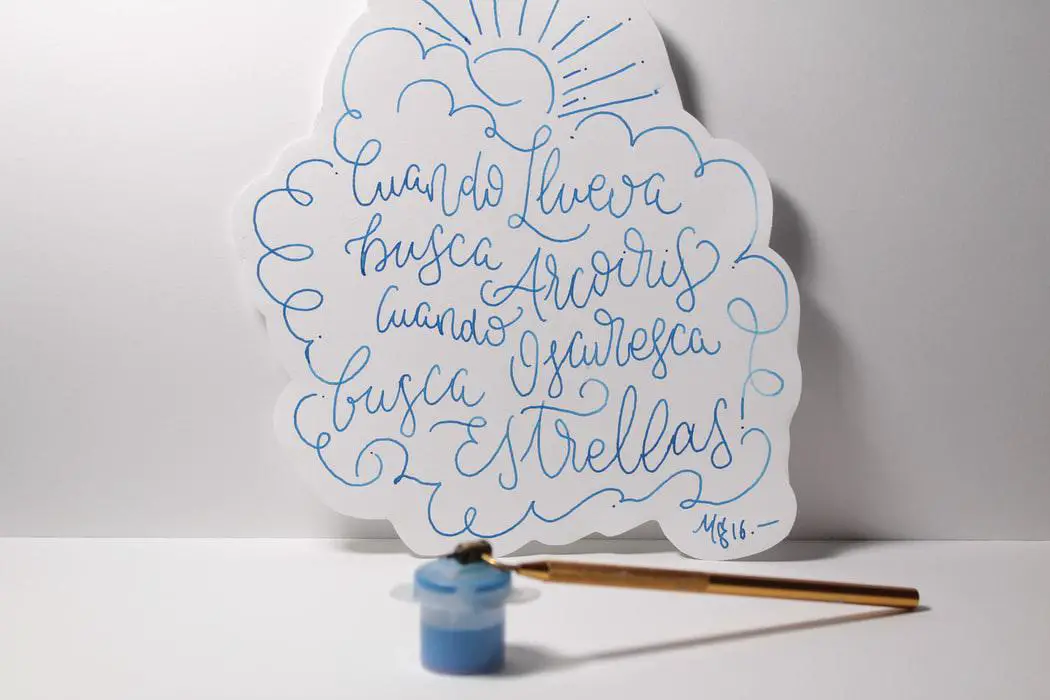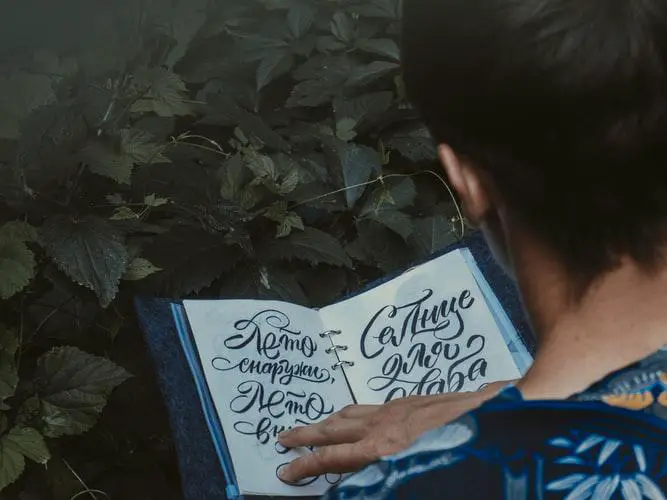
Calligraphy can simply be defined as the visual art of writing. With an ornate outlook and a history as rich as the art form itself, calligraphy is about well-thought-out and designed letters. It has long been associated with religion and spirituality as the aesthetics are often used to invoke a sense of righteousness in people. Many of the religions used calligraphy to make the holy writings more appealing to the masses.
A contemporary calligraphic piece can be said to be a way of giving forms and signs an expressive and harmonious look. Although calligraphy remains a part of many religious scriptures, it is no longer restricted to it. Calligraphy can now be found on wedding invitations, ad copies, social media posts etc.
How did it stop being a culturally religious formula and what influence it had over different religions lets find out?
Islam
Origins
The ornate and mesmerizing Arabic language is inherently tied to the art of calligraphy. It is held in great esteem by all Muslims worldwide because it happens to be the language in which the “Qu’ran” was written by Prophet Mohammed in the 7th century. The calligraphic nature of the “Qu’ran”, might provide insight into the world of calligraphy and but in no way all of the Arabic calligraphy religious in nature. The Holy Status of the book does provide a sense of importance to the calligraphic way but it was also seen in other religious texts, aphorisms, praise for rulers and poems.
Since Muhammad’s time Arabic has been used as a language of religion, commerce, government, literature and sometimes science too. Although many dialects of Arabic were spoken in the pre-Islamic times most of the literary works were first handed down orally. Until Prophet Muhammad’s death, the Qu’ran was passed from one to other through oral transmission only.
After his death, it was established that the Arabic script needs to be standardized so that the Qu’ran could be written. We have proof that by the end of the 7th century, the script had been standardized as it could be seen of the Dome of the Rock in Jerusalem. It has also been found on various architectural buildings and was also found on many coins that were minted in that era. These not only were calligraphic in nature but also declared the monotheism of Islam.
Kufic style can be said to be the first formal calligraphic style that originated in the Kufah in Iraq. Many inscriptions and Qu’ran manuscripts used this style and it is the one that can be seen on Dome of the Rock. Interestingly Kufic can also be used for the style of calligraphy found in the city of Baghdad circa 10th Century. It was much more angular and ornate in nature. The second style was not only restricted to Qu’ran but was also used for coinage, decorations of ceramics, architectural buildings etc.
While the second style of Kufic was developing in Baghdad another style of calligraphic Arabic was taking birth in the land of Morocco. This style was known as Maghribi. It is still in use in some parts of Morocco. Most of the Kufic styles went out of practice in the 13th Century and were replaced by much more rounded iterations. The more fluid nature of the later styles could be attributed to the fact that paper had replaced parchment. The smooth surface was conducive to making ornate designs. The paper would be coated with starch and rubbed with stone until it had a smooth and glossy surface. While in Morocco, parchment was used till a much later date.
The fluidity of the newly emerging style can be directly attributed to the paper being used instead of papyrus or parchment. Similarly, the new type of pen being used could also be the reason that the style had become less crude. The new pen was made of a reed cut at an oblique way with a knife. This allowed the calligrapher to produce both thick and thin lines. This added the much-needed variety and elegance to the strokes. Also, important to notice is that the width of the new pen was much wider. This meant that a person could work on larger manuscripts as he was no longer restricted to the strokes of the older and smaller pen.
Christianity
Origins
Western calligraphy uses the Latin script and was popular during the first 1st century. This system later developed into the Roman Imperial Capitals for stone carvings, Rustic capitals for use in paintings and the Roman cursive for everyday use. In the 2nd and 3rd century the “Uncial Lettering” was developed. Soon after this, the writing was mostly limited to monasteries and the uncial script was found to be more appropriate for making copies of the Bible.
These early reproductions had a great emphasis on calligraphy and were represented in a great collector’s item sort of way. The monasteries preserved this calligraphic tradition in the 4th and the 5th century when the Roman Empire fell. In short, it can be said that the monasteries were the ones that saved the tradition in the dark ages.
At the height of its greatness, the Roman Empire succeeded to reach even Great Britain and after its fall the literature remained. The “Uncial” influenced both the Irish and the Saxon and both went on to develop their own forms of the language.
Christian churches promoted the art of calligraphy through the copying of the bible. Unknowingly they also promoted people to get into calligraphy. Many of the people who owned such copy were fascinated at how the words were works of arts and how beautifully all of it had been laid out.
Sacred Western calligraphy has some unique elements like the illuminating or decorating the first letter of each book or chapter. Unlike others, there was a strict set of rules as to how every word should be written and how the placement works. Most of the quality writings had a sense of rhythm and continuity. Many had decorative pages which depicted some passages from the books. These can be said to etchings or drawings as they were geometric and boldly colored. This added a certain charm and value to the book.
Hinduism
Origins

Indian Calligraphy dates back to 2nd century AD and was started as a means of noting down religious texts. Going against the tradition of oral transmission, the written manuscripts made it easier to transfer knowledge. This was also in view of the expansionism policy of the religions at the time. What makes this script unique is the fact that it was not inspired by any of the pre-existing scripts in the world. Thus, developing a unique identity for itself.
Most of the texts obtained are religious in nature but many accounts of royal courts have also been found. It is interesting to note that in almost all cultures, the development of calligraphy is parallel to its religious use and then accounting for the everyday happenings in the royal palace. In the majority of the cases, the books could only be accessed in gurukuls but only after one had a decent amount of training.
At first, birch bark was used as a surface to write on and were later substituted for palm leaves. The leaves were used because they were a good surface for writing with a pen. The smooth surface is what prompted the use of artistic letters, which later developed into calligraphy. Both sides of the leaves were used as both of them were suitable for writing. Sharing elements with both Arabian and Western calligraphy, Indian calligraphy was both angular and cursive in nature. Most of the ornate book cover and graphical representations of things were not available until the 6th century.
As religious texts were now available to the common man, many people now had the knowledge that was once obscure or unattainable to them. This meant that calligraphy later developed into writing for the use of more practical things like bookkeeping and accounting. This also translates to the reign of kings and how they practiced their rule over the people. This became a valuable source of information for us today.
Before this, there was no true form of written communication. A fine tradition of calligraphy was embraced before the printing press came to India. This also meant that before printing people, were still able to own books and Vedas that had been hoarded by upper castes before. This, in turn, led to an educated public as compared to before. Many fables and legends can be learned from the calligraphy available on such manuscripts.
Conclusion
It is interesting to see how religion played a great part in the development of calligraphy, and in modern times, how it is almost disconnected in practice. All of the above religions promoted calligraphy as a means of spreading their religions. Till date, are one of the most prized possession of these religions is the original manuscripts and engravings. If it weren’t for calligraphy, we might not be where we are today.